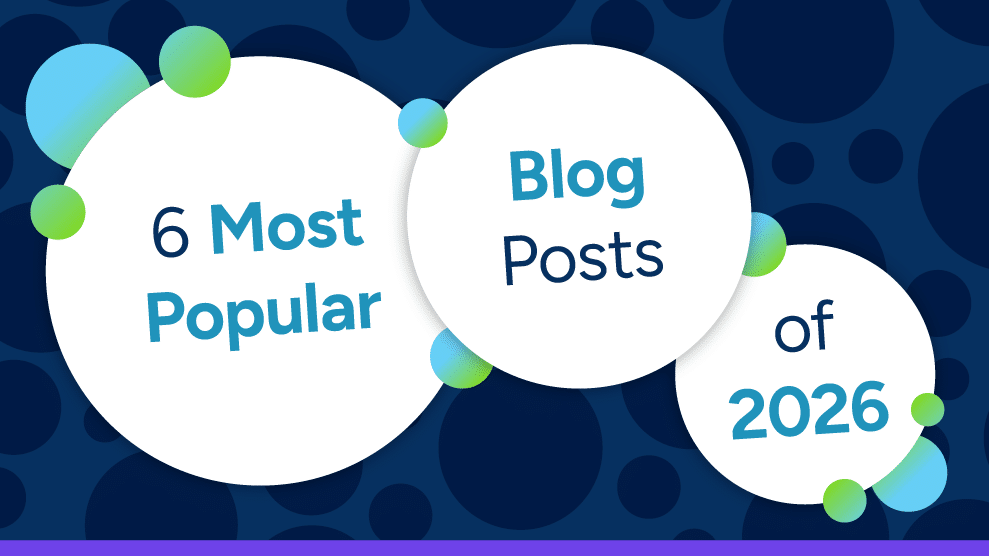
6 Most-Popular Blog Posts of 2025
Ethics and Compliance


Specific steps you can take to create an inclusive environment that will help to optimize the hybrid workplace model in a way that will benefit your organization and everyone in it.

Are you loving the hybrid model, or are you struggling with it and wondering how it will affect the future of your organization? Whatever your situation, the fact is that after taking a firm hold during the pandemic, it looks very much like the hybrid model is here to stay. With that new reality setting in, what can we do to leverage this model to its fullest? How can we make sure that collaboration, innovation and performance remain high?
The answer to these questions may surprise you: It’s in the inclusivity of your culture. In this article, I will explore this idea by first considering what we’ve learned in recent years. Then, I will share some specific steps you can take to create an inclusive environment that will help to optimize the hybrid workplace model in a way that will benefit your organization and everyone in it.
There’s been a definite ramp up of popularity for the hybrid work model for both organizations and employees. Research from career expert Zippia reveals that 74 percent of U.S. companies are using or plan to implement a permanent hybrid work model and 83 percent of workers would prefer a hybrid work model in the future. The top five factors organizations considered in choosing this model included employee health and wellness, employee productivity, access to talent, aligning workforce plans with mission and diversity, equity and inclusion.
And according to McKinsey & Company, “74 percent of employees currently working in a hybrid model, 85 percent want it retained going forward and 71 percent would leave if hybrid work was no longer available. This strong preference appears across industries, geographies, and demographic boundaries.” They also found that “traditionally underrepresented groups demonstrated an even stronger preference for hybrid work.” All of this speaks to the connection between a hybrid model and the ability for organizations to recruit and retain an effective employee workforce.
74% OF U.S. COMPANIES ARE USING A PERMANENT HYBRID WORK MODEL
85% WANT IT RETAINED GOING FORWARD
71% WOULD LEAVE IF HYBRID WORK WAS NO LONGER AVAILABLE
Further, the choice of a hybrid model seems to be working from a performance standpoint as well: 83 percent of companies say collaboration on new projects has been as good or better than it was before the COVID-19 pandemic when everyone was in the office full-time.
However, the hybrid model is not without its challenges. Gleb Tsipursky, consultant and author of the best-selling book, “Returning to the Office and Leading Hybrid and Remote Teams,” points out that “One potential issue is the impact of cognitive biases on decision-making. For example, the availability heuristic, which refers to the tendency for people to base their judgments on information that is most easily available to them, may lead leaders to rely too heavily on their personal experiences with remote work rather than considering the unique needs and circumstances of their organization.”
This might mean, for example, that if a manager is distracted when working at home, they might assume others are as well. That kind of thinking limits the manager’s ability to see beyond their own life experience and leads to a narrowing of decision-making based on their own biases.
Because of the complexities of the hybrid workplace, to function effectively, it’s more important than ever to focus on inclusion. Here’s why: One of the biggest risks posed by the hybrid work model is feeling out of touch with our peers, and disengaged and disconnected from our organization. Inclusion is a powerful combatant to those risks because it serves to break down barriers—creating personal connections and unifying people around mutual goals and an overarching common purpose.
Let’s look at 10 strategies for using inclusivity to strengthen your hybrid work environment.
Leaders must be at the forefront of committing to a hybrid model—which often means they need to learn to think and act differently to create an equitable and inclusive work environment for both in-person and remote workers. Experts at McKinsey suggest that leaders manage performance through outcomes, impact and ownership–such as setting clear roles, tangible goals and milestones, providing support on any roadblocks, ensuring workloads are manageable, establishing accountability, facilitating and engaging with teams, and encouraging team problem solving.
They also advise building trust and togetherness, expressed in this way:
While the basic tenets of inclusion, (fair treatment, belonging, feeling included) apply widely, the specifics of how they are applied is unique for each organization. In other words, inclusion is not the same thing for everyone. To get a pulse on what inclusion means in your hybrid workplace, collect data, gather opinions (formally and informally) and honestly consider what you’ve learned. Ask yourself:
Humans are social beings, and we need to have positive interactions with others to bring out the best in ourselves. The remote/hybrid model creates some challenges in this area, but they are not insurmountable. But it will require you to be intentional in how you help employees make personal connections. And you’ll want to be creative with how and when you make these opportunities happen. For instance, some organizations hold “coffee chats,” or dedicate a portion of each meeting for informal talk about life outside of work, or they might infuse meetings with fun activities like show and tell. But keep in mind that not everyone feels the same need to share, so it’s best to allow people to communicate only what they feel comfortable revealing.
Finally, consider whether your onsite location is designed to nurture personal relationships. Do people have a comfortable place to congregate and talk without disrupting others? Does your culture encourage, rather than discourage informal chats?
When it comes to selecting the right digital tools for the hybrid environment, Harvard professor Tsedel Neely advises companies “to make sure that we’re matching our digital tools for the work in front of us.” Teeley cautions that, “We are over indexing on certain technologies,” such as videoconferencing which can lead to people experiencing tech exhaustion, which is something we can all relate to. The best way to avoid this, says Teeley, is to match our intentions with the right digital tools in a balanced way. It’s an approach that puts people first and technology second. As an example, for video-conferencing it might mean making it known that it’s acceptable to sometimes go off camera in a meeting, limiting the length of meetings and ensuring they are focused, inclusive and interactive.
For more information on Traliant’s DEI training click here.